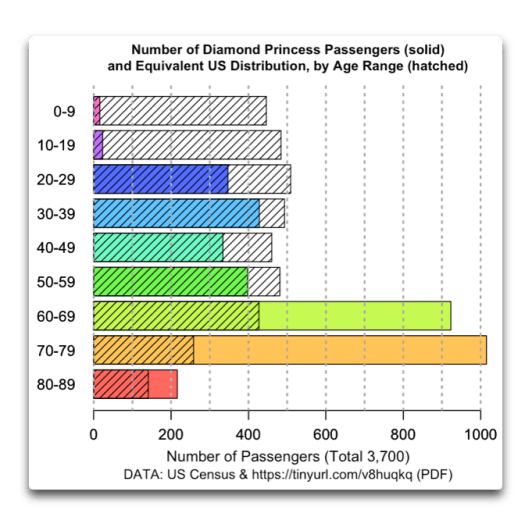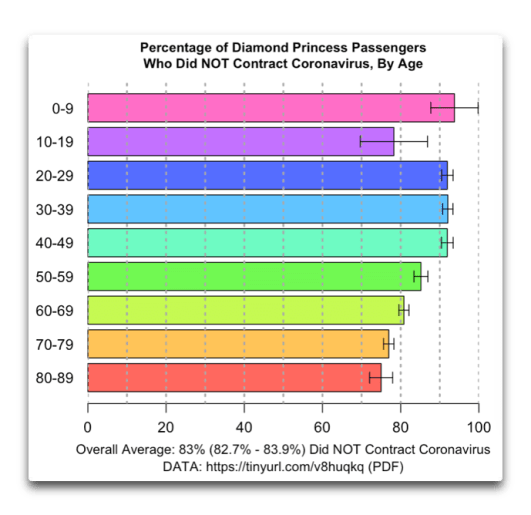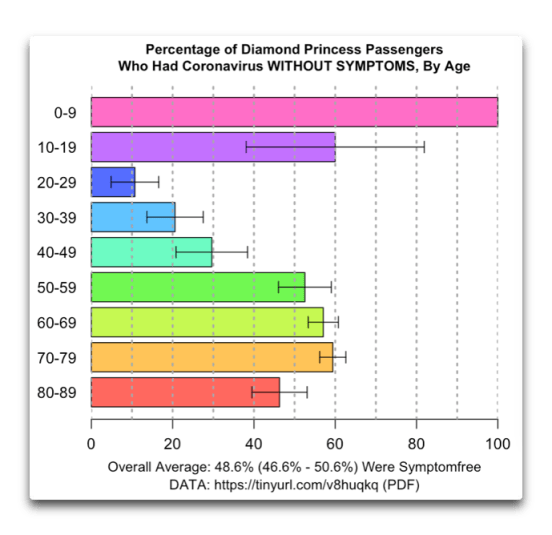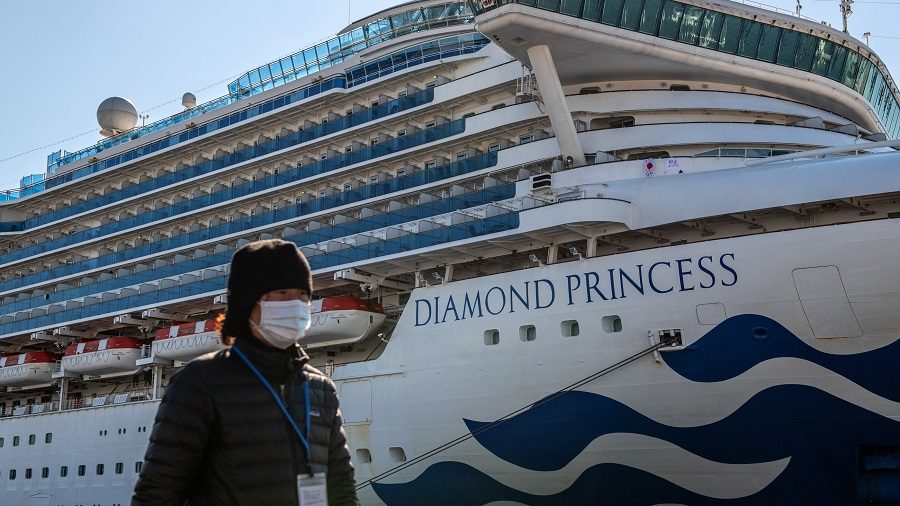So I dug around and found an analysis of the situation, with the catchy title of Estimating the infection and case fatality ratio for COVID-19 using age-adjusted data from the outbreak on the Diamond Princess cruise ship(PDF), so I could see what the outcomes were.
As you might imagine, before they knew it was a problem, the epidemic raged on the ship, with infected crew members cooking and cleaning for the guests, people all eating together, close living quarters, lots of social interaction, and a generally older population. Seems like a perfect situation for an overwhelming majority of the passengers to become infected.
And despite that, some 83% (82.7% - 83.9%) of the passengers never got the disease at all ... why? Let me start by looking at the age distribution of the Diamond Princess, along with the equivalent age distribution for the entire US.

In any case, Figure 1 shows the preponderance of ... mmm ... I'll call them "folks of a certain distinguished age" on the Diamond Princess. Folks you'd expect to be hit by diseases.
Next, here's the breakdown of how many people didn't get the virus, by age group:

Next, slightly less than half the passengers (48.6% ± 2.0%) who got the disease showed NO symptoms. If this disease is so dangerous, how come half the people who got it showed no symptoms at all? Here's the breakdown by age:

There were a total of 7 deaths among those on board. All of them were in people over seventy. So even though the generally young were more likely to show symptoms if they had it, it hits old people the hardest.
Finally, according to the study, the age-adjusted infection fatality rate was 1.2% (0.38%-2.7%). Note the wide uncertainty range, due to the small number of deaths.
For me, this is all good news. 83% of the people on the ship didn't get it, despite perfect conditions for transmission. If you get it, you have about a 50/50 chance of showing no symptoms at all. And the fatality rate is lower than the earlier estimates of 2% or above.
It is particularly valuable to know that about half the cases are asymptomatic. It lets us adjust a mortality rate calculated from observations, since half of the cases are symptom-free and likely unobserved. It also gives a better idea of how many cases there are in a given population.
To close out, I took a look at the current state of play of total coronavirus deaths in a few selected countries. Figure 4 shows that result.

Finally, a plea for proportion. US coronavirus deaths are currently at 67, we'll likely see ten times that number, 670 or so, might be a thousand or three ... meanwhile, 3,100 people die in US traffic accidents ... and that's not 3,100 once in a decade, or 3,100 per year.
That's 3,100 dead from auto accidents EACH AND EVERY MONTH ... proportion ...
My best to all on a day with both sun and rain here, what's not to like?
w.
As Always: When you comment please quote the exact words you are referring to, so we can all understand who and what you are discussing.
Terminology: Yes, I know that the virus is now called 2019-nCoV, that it stands for 2019 novel CoronaVirus, and that the disease is called Covid-19, and that it stands for COronaVIrus Disease 2019 ... so sue me. I write to be understood.
Data: For those interested in getting the data off the web using the computer language R, see the method I used here.
Other Data: A big hat tip to Stephen Mosher for alerting me to this site, where you can model epidemics to your heart's content ... Mosh splits his working time between Seoul and Beijing, he's in the heart of the epidemic seeing it up close and personal, and he knows more about it than most.




Reader Comments